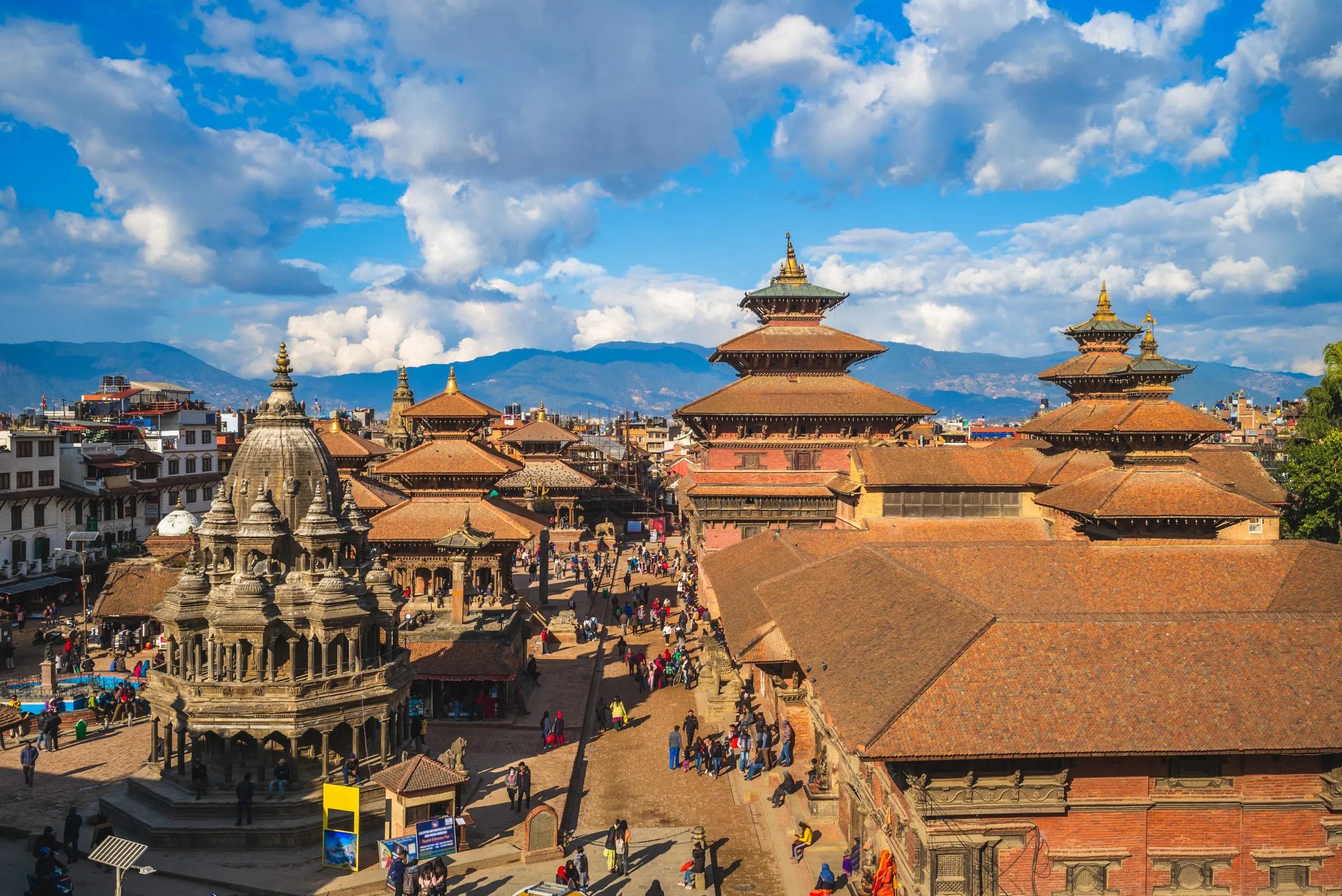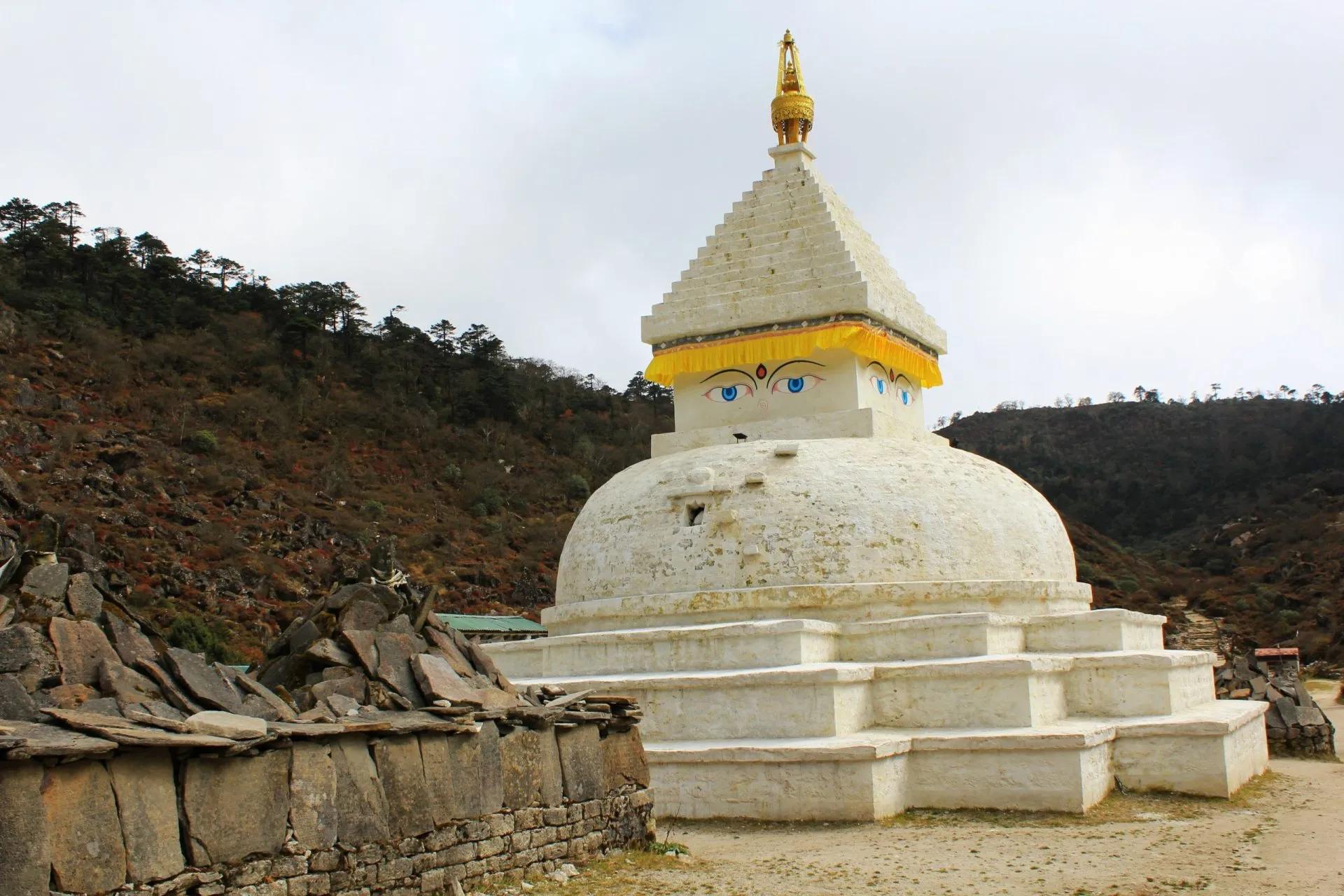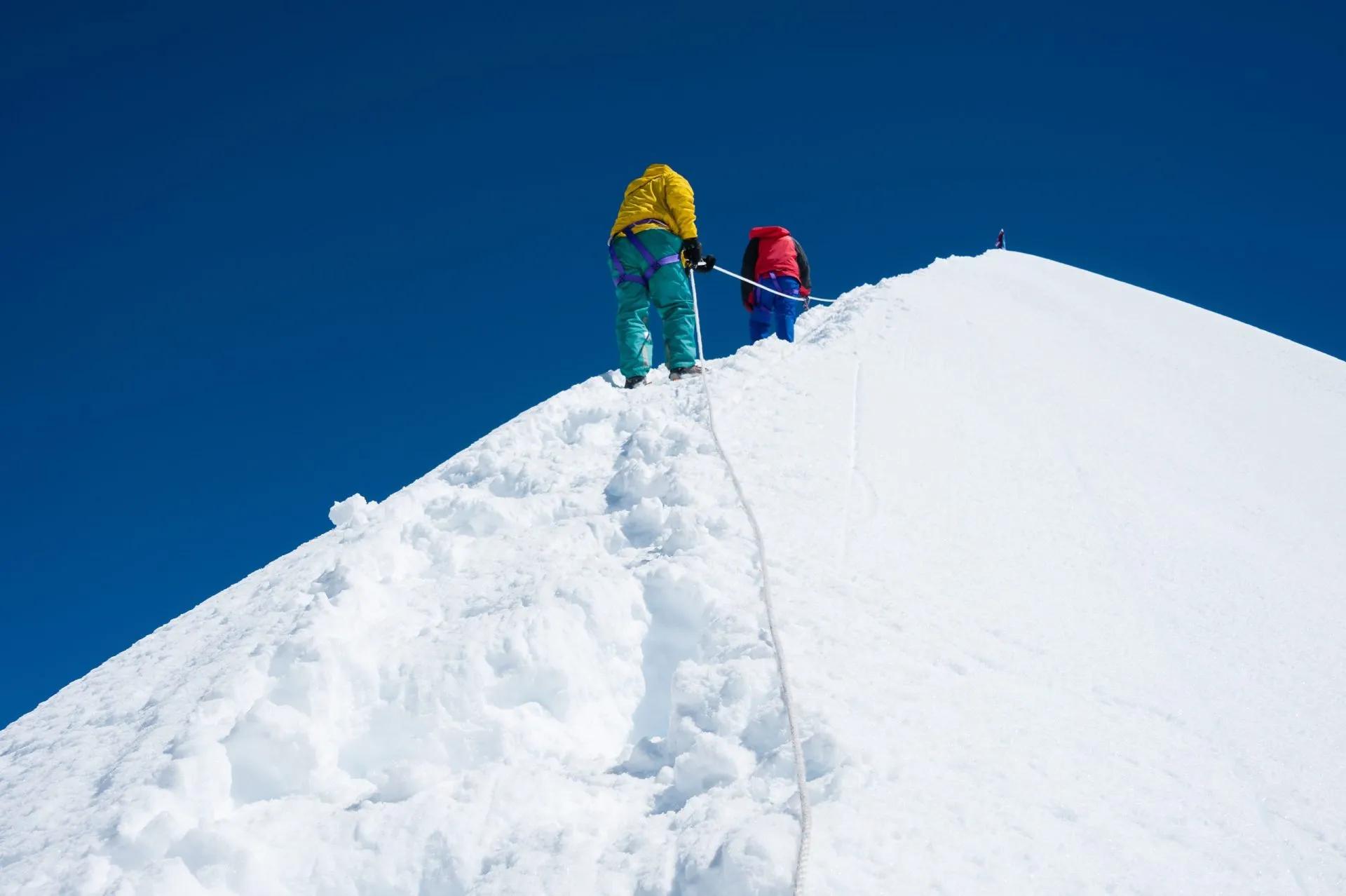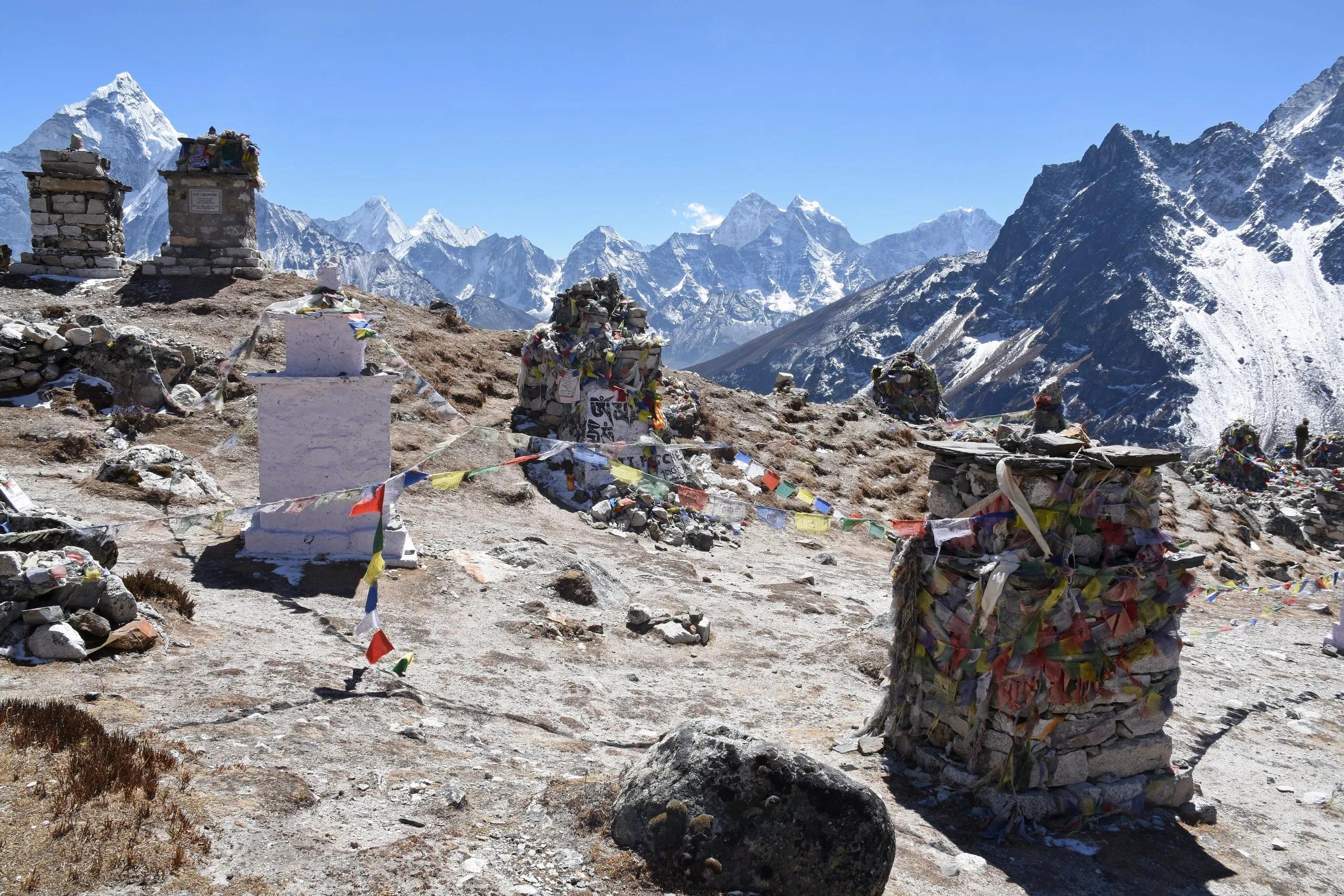Everest Base Camp Trek
14 days / 13 nights
|















Starting point
Kathmandu
Finish point
Kathmandu
Season
From March to May
Technical level
3/5
Fitness level
4/5
Tour type
Hut-to-Hut
from:
1.825 €
/person
.jpg&w=256&q=75)
Starting point
Kathmandu
Finish point
Kathmandu
Season
From March to May
Technical level
3/5
Fitness level
4/5
Tour type
Hut-to-Hut
- Enjoy the breathtaking views of the Himalayas
- Visit monasteries such as Khumjung and Pangboche
- Trek to the Base Camp of Mount Everest
- Enjoy the untouched nature of the Sagarmatha National Park
- Climb Mount Island Peak
- Learn and experience the life of the locals
Itinerary of the trip
What’s included in the price?
Guided
NOT INCLUDED
What to bring to the tour
- Hiking shoes/boots
- 25 to 45-liter backpack
- Base layer
- Sports T-shirts
- Hiking shorts
- Hiking water-repellent pants
- Waterproof jacket
- Midlayer
- Sports socks and underwear
- Leisurewear for evenings
- Down jacket
- Gloves
- Shade hat/cap
- Warm headwear
- Sunscreen
- Sunglasses
- Headlamp
- Hiking poles
- ID card or passport
- Snacks
- Cash
- Water bottles or hydration pack
- Sleeping liner
- Toiletries
- Toilet paper
- Small first aid kit
The Everest Base Camp Trek is an unforgettable journey that takes hikers to the base camp of the world's highest mountain, Mount Everest. The trek typically takes 12-14 days to complete and passes through the Sagarmatha National Park.
This UNESCO World Heritage site is located in the Solu-Khumbu district of Nepal and covers an area of 124,400 hectares. It is home to Mount Sagarmatha (Everest) and several other peaks over 7,000m, as well as rare species such as the snow leopard and red panda. Gazetted in 1976, SNP is a well-known destination for mountain tourism and also serves as a home to over 2,500 Sherpa people and 20 villages.
Along the way of the Everest base camp trek, you will experience breathtaking views of the Himalayas, including Mount Everest, as well as the chance to immerse yourself in the culture and lifestyle of the Sherpa people who call the region home.
The trek starts with an adventurous flight to Lukla, where trekkers will begin their journey on the well-known route to Everest Base Camp. Along the way, trekkers will see stunning views of different places like Namche Bazar, Tengboche Monastery, Kala Patthar, small Sherpa villages, and many prayer flags.
They will also have the opportunity to explore amazing views of Mt. Everest and other Himalayan peaks like Cho Oyu. The trek includes a professional guide and porter (one porter for two people carrying 15 kg) to assist you along the way.
The Everest Base Camp trek is considered moderately difficult, due to the altitude difference, rugged terrain, and variable weather conditions. Trekkers should be in good physical condition and acclimatize properly before starting the trek.
The average daily elevation gain is 400-800m, with the highest point of 5364m above sea level. Accommodation is provided in twin or double sharing in the best mountain lodges and hotels along the route, and three meals a day will be provided during the trek.
Frequently Asked Questions
Ratings & Reviews

5.0 average rating

I had got fairly five star services from Himalayan Asia Treks Team. It’s my first experience in trekking so I asked with Amrit about best trekking route for me. Amrit suggest me to go Annapurna base camp trek. On first day Guide Babu suggest me to take only necessary things in trekking route. I really impressed with briefing style. While in trekking route, Babu gave me full information about Annapurna region.
I have booked Everest base trek with Himalayan Asia Treks team in 2016. We did our trek with best guide Mr Babu. It was amazing and memorable experience in my life. Our guide Babu is really good knowledge and good professional skilled guy. They arranged all thing in perfect way. Hotels and restaurant are neat and clean on the way which they choose. I could not speak in word , they are best agency in Nepal.
We choose Himalayan Asia Treks for our Nepal trekking. When we sent query to them & they response on time. When we were in Nepal, they helped and cared very well way to us. We went Everest base camp trek where we find local village and unique culture. Our guide Mr. Ram have good knowledge about this area. So, he shared us thing about Sherpa culture and lifestyle. We are really thankful to Mr. Amrit and Mr. Ram for making our trip memorable.
I went to Nepal for a short solo trip. So I needed guidance to make the best use of my time. Himalayan Asia Treks provided me such a great guidance. My solo trip was so memorable. Mr. Amrit is so cordial & friendly. They arranged the Accommodation, Transport, Guidance, Bungy and whatever I needed to make this trip memorable. Apart from all these service, the cost is so reasonable. I would be thankful to you Mr. Amrit
we did Everest base camp trek with Himalayan Asia Treks on October. We found their team is very good with skilled. We have no experience about trekking but Babu our guide give us more courage. We really thanks all staff Amrit and Babu who care us like our family.
Similar Products

EXPERT LOCAL GUIDES
Our professional guides know the local terrain and are trained to make this once-in-a-lifetime opportunity both safe and enjoyable.

HASSLE-FREE
We handle itineraries, accommodations, and anything else you prefer not to deal with, so you can enjoy a carefree trek.

TRUSTED BY MANY
We are a financially protected company operating since 2014, and with thousands of satisfied customers in the past, we still put you first.

UNBEATABLE SUPPORT
Our 24/7 customer support is where we show our passion by making your well-being our number one priority.




























































.jpg&w=3840&q=75)